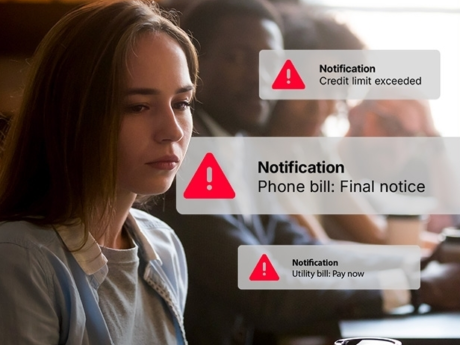Financial goal setting: 7 realistic examples you can achieve
CIRP, Licensed Insolvency Trustee

CIRP, Licensed Insolvency Trustee
A financial goal is a target to aim for when managing your money. Setting achievable financial goals gives you a sense of direction, helps guide decision-making, and is a source of motivation. You can think of your financial goal as the destination and your strategy as the map. If you don’t know where you're going or how you’ll get there, chances are you won't reach your destination anytime soon.
Your stage of life and financial situation typically determine the financial goals you aim for. For example, someone in their 20s might focus on repaying student loan debt and saving for a down payment compared to someone in their 50s who might focus on contributing to their RRSP and planning for retirement. If you’re curious about how your financial situation compares to others your age, check out our article that reveals how much debt is ‘normal’ for your age.
How do I set realistic financial goals?
You should figure out your goals before starting to plan how you’re going to achieve them. You might already have a few in mind, like saving up for a down payment, paying off credit card debt, or limiting your spending. Test out these four SMART steps to setting realistic financial goals:
1. Be specific about what you want to accomplish. One of the main reasons people fail to meet their goals is because they’re too vague. For example, ‘I want to pay off my debt’ offers little direction and needs more detail. Which debt? How much debt? Let’s break this goal down even more.
2. Set measurable goals. Using dollar amounts or percentages will allow you to measure your progress and success. Instead of ‘I want to pay off my debt,’ select a specific debt and the exact amount you want to pay off. For example, ‘I want to pay off 50% of my $10,000 student loan’.
3. Set a deadline for your goals. Setting a realistic deadline will help you keep your goals top of mind and stay motivated. Goals that aren't time-sensitive are often procrastinated or forgotten about. By adding a deadline, your goal is nearly complete: ‘I want to pay off 50% of my $10,000 student loan within 18 months’.
4. Set realistic goals. Chasing a goal that is beyond your current capabilities will only lead to one thing: disappointment. Looking at your current financial situation and building your goals from there is important. ‘I want to pay off 50% of my $10,000 student loan within 18 months’—means you will need to pay $275 each month. Can you afford this? Does it fit in your monthly budget? It’s important to be honest with yourself and, if necessary, adjust your goals to align with your financial situation.
Examples of financial goals
Short-term goals are achievable within a matter of months.
- I’ll save 10% of each paycheque by auto-depositing that amount into a TFSA.
- I’ll limit the number of times I dine out in a month to only once a week.
- I’ll set up an emergency fund and contribute $100 each month.
Mid-term goals are achievable within a year.
- I’ll complete a full 12-month budgeting cycle to gain a realistic idea of my expenses.
- I’ll stop using my credit card and pay off its balance of $5,000, plus the interest, by the end of the year.
Long-term goals may take more than a year.
- I’ll budget to pay back 50% of my $15,000 student loan within two years.
- I’ll save $10,000 within 24 months in a First Home Savings Account.
Common financial goal ideas
- Pay off credit card debt
- Create an emergency fund
- Save for retirement
- Save for a down payment
- Pay off mortgage
- Save for a home renovation
- Pay off student loan debt
- Improve credit score
- Contribute to TFSA
How do I achieve my financial goals?
What people find most challenging about financial goals isn’t the process of setting them; it’s sticking to them. It can be easy for someone to create a list of goals only to have them fall off their radar. Life can get busy, and we often push our budgets and financial goals aside.
Set a variety of goals. Achieving a financial goal brings feelings of accomplishment and pride but most importantly increases your confidence. That’s why it’s important to set a mixture of short-, mid-, and long-term goals to stay energized and maintain motivation. After achieving a short-term goal, confidence and achievement will help motivate you to tackle larger goals. Try to come up with three financial goals: one that you can accomplish within a month, one that you can accomplish within the year, and one that you want to achieve within two years.
Set goals that matter to you. Avoid influence from others and focus on your wants and needs. Ask yourself what change or improvement would matter most to you. Just because someone at work is going on a vacation or your friend is financing a new vehicle doesn’t mean you need to follow suit. Create goals to achieve your desires, not mirror those of others.
Check-in with yourself and make changes. Throughout the year, it’s important to set dates to check in on the progress of your goals. If you need to catch up, review your goals and adjust your strategy to make sure your goals are attainable and realistic.
If you’re struggling with overwhelming debt, speaking with a Licensed Insolvency Trustee is the best place to start. Our team is here to get you on the path to debt freedom and a better financial future, so book online or call 1-884-4GT-DEBT today and get your free consultation.
Take the first step to debt freedom
Speak to one of our debt solutions professionals during a free, no-obligation consultation.
Related articles
Loading







